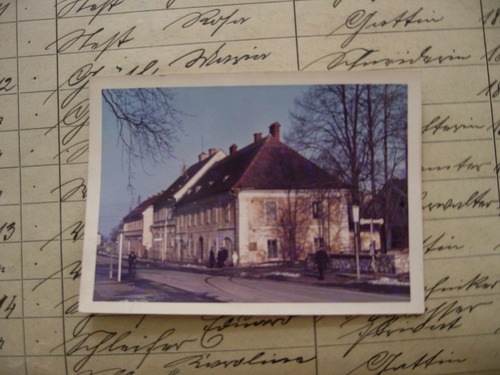
A Travelogue in Five Parts By Nicholas Kulish
Nicholas Kulish spent more than half a decade tracing the path of Aribert Heim, a Nazi concentration camp doctor who fled postwar justice in Germany. The research for his book on Heim, The Eternal Nazi, co-authored with Souad Mekhennet, led him to Denmark, Austria, Egypt, Morocco, and across Germany. This week on the Logger we’ll be posting five entries from his travels. Catch up with Part I. Part II.
III. Bad Radkersburg, Austria
Few American visitors to Austria ever venture as far as Bad Radkersburg on the Slovenian border. There are no ski resorts, no famous opera houses. The history books I had read about Aribert Heim’s birthplace always described it as a frontier town, which made no sense in my concept of Austria or even Europe. But as my train left the spectacular mountain-rimmed alpine valleys and entered a wide flat plain it made far more sense.
The hometown was a necessary stop in writing what was in many ways a biography. My first day in the town museum, which doubles as the archive, I learned that the mysterious SS doctor I was writing about had a twin brother who died at birth. The sense that I was a performer in the frame story of a late night, straight-to-cable movie was strong. It was spooky but I persevered.
I had wanted to visit from the first time I laid eyes on a photograph of Heim’s father, a gendarmerie commander in the service of the Austro-Hungarian Emperor Franz Josef. With his long curling mustache and uniform studded with stars, buttons and medals he looked as though he had climbed off the pages of Joseph Roth’s Radetzky March. Therefore, by my logic, I could only dine at the Kaiser von Österreich hotel the night I arrived.
The food was pretty good but what I remembered most were the gun barrels pointed at me. The townspeople had finally summoned up the courage to move the Soviet World War II monument that the Red Army had forced them to erect in the central town square. Now it stood at Grazertorplatz by the Kaiser von Österreich, hammer and sickle in the center, CCCP 1945 written below, two of the three soldiers posed on top pointed their automatic rifles at me as I wolfed down my schnitzel. A grander Soviet monument stands in Berlin, but the fact that the Russians went around forcing people to build them statues in towns as small as Radkersburg, population of 2000 at the start of the war, said a lot about their the town was so small, but the European history felt particularly intense...
You have reached your article limit
Sign up for a digital subscription and continue reading all new issues, plus our entire archives, for just $1.50/month.
Already a subscriber? Sign in




